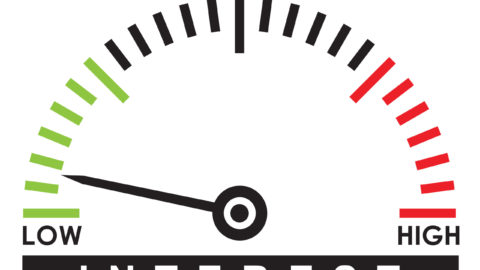3 Common Mistakes to Avoid in Your 401(k)
By Allison Schmidt, CFP®, CPA
Fewer and fewer companies provide defined benefit pension plans to employees and have replaced these plans with 401k (or equivalent) retirement plans with a company match. According to Aimee DeCamillo of T. Rowe Price Retirement Plan Services, “In 2016, we saw slightly less than 75 percent of companies across all industries offering a (401k) match.” So, the burden of planning for retirement has slowly shifted from a company responsibility to an employee responsibility. In order to retire on your terms, likely more than 40 years after you start working, you’ll need to understand and take full advantage of the plan available to you. Here are several common mistakes to avoid as you work through your plan.
- The Company Match: There are a couple mistakes that investors can make surrounding the company match. The first is not completely understanding how the match works. For example, if your company matches 50% of your contribution up to 3%, you have to contribute 6% in order to get the full 3% match. The match itself is a no brainer, it’s literally free money. However, another costly mistake is when investors only contribute up to the match and call it good. Yes, you certainly want to make sure to contribute at least to the match; however, contributing just 3-6% per year will likely not get you close to your retirement goals. For example, if you make $75k per year, 6% per year is saving $4,500 a year. That would accumulate to $496k in 30 years, earning 7% annual interest, at a 4% withdrawal rate would provide about $20k in income per year in retirement, likely not enough.
- The Tax Implications: Many employees don’t fully embrace the tax-deductible piece of their 401k when determining the amount to contribute or the acceptable reduction in take-home pay. Remember that deferring 10% of your income to your 401k doesn’t decrease your net take-home pay by 10%. Because of the tax savings you receive, you’re likely looking at closer to about 8% decline in net pay. Additionally, more and more companies are beginning to offer Roth 401k options. This option is helpful in avoiding a huge tax burden during your retirement years, but it does not help the change in take-home pay since contributions to a Roth will flow straight to the take-home pay bottom line because they are not tax deductible. (i.e. a 10% deferral to a Roth 401k will reduce your take home pay by 10%). Depending on your personal financial situation, there are a number of investors who do not qualify for a Roth IRA; however, with a Roth 401k option from their employer, they are able to build Roth assets in their plan. Whether this makes sense has to do with where you are from a taxable income standpoint compared to where you will likely be in the future. Building multiple buckets of assets for retirement remains crucial for creating tax efficient income in retirement.
- The Investment Breakdown: Simply, allocation matters. Make sure to do your research or ask your financial advisor to help you determine what your investment breakdown should be. Utilizing large-cap, mid-cap, small-cap, international, and bonds are all important to build an appropriate portfolio and use the automatic rebalance feature. The majority of plans have a free automatic rebalance feature built in, you just have to activate it. This is important to keep your investment breakdown in line over time. If not, you will end up with either significantly more or less risk over several years and your portfolio will have little chance of returning what you expect. Does all of that sounds like too much work? Consider using Target Date Funds. These funds have a date in the name that should correspond with your anticipated retirement year. These are made up of several different funds for diversification across multiple sectors, are rebalanced quarterly, and change allocation as you get older. This would be the closest thing to set it and forget it for a 401k plan.*
Retirement plans at work can be incredible savings vehicles for long-term accumulation for retirement and tax management over time. The most important aspect of any savings plan remains the same–time. Don’t make these common mistakes. Save early and often, and let time do the rest.
*Please note that the principal value of a target fund is not guaranteed at any time, including at the target date.
Securities offered through LPL Financial, Member FINRA/SIPC. Investment advice offered through HD Wealth Strategies, a registered investment advisor and separate entity from LPL Financial.
The opinions voiced in this material are for general information only and are not intended to provide specific advice or recommendations for any individual.
There is no guarantee that a diversified portfolio will enhance overall returns or outperform a non-diversified portfolio. Diversification and asset allocation does not ensure a profit or protect against a loss.
Examples are hypothetical and not representative of any specific investment. Your results may vary. The hypothetical rates of return used do not reflect the deduction of fees and charges inherent to investing. This information is not intended to be a substitute for specific individualized tax advice. We suggest that you discuss your specific tax issues with a qualified tax advisor.
The Roth IRA offers tax deferral on any earnings in the account. Withdrawals from the account may be tax free, as long as they are considered qualified. Limitations and restrictions may apply. Withdrawals prior to age 59 ½ or prior to the account being opened for 5 years, whichever is later, may result in a 10% IRS penalty tax. Future tax laws can change at any time and may impact the benefits of Roth IRAs. Their tax treatment may change.
Rebalancing a portfolio may cause investors to incur tax liabilities and/or transaction costs and does not assure a profit or protect against a loss. Stock investing involves risk including loss of principal. The prices of small and mid-cap stocks are generally more volatile than large cap stocks. International investing involves special risks such as currency fluctuation and political instability and may not be suitable for all investors.
Bonds are subject to market and interest rate risk if sold prior to maturity. Bond values will decline as interest rates rise and bonds are subject to availability and change in price.










